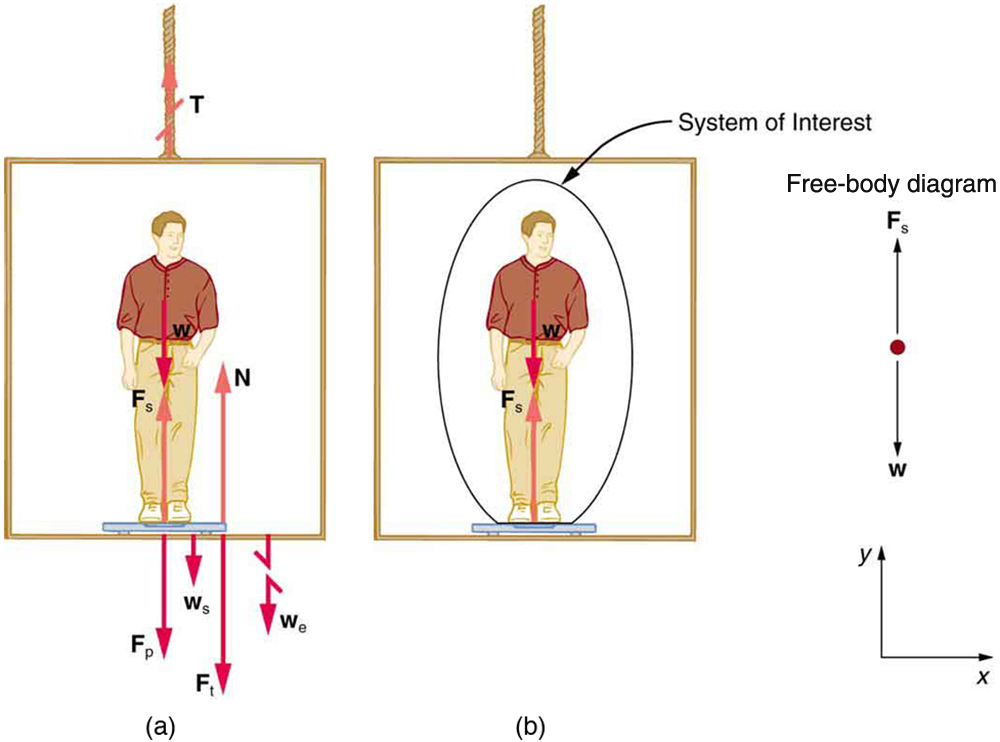| << Chapter < Page | Chapter >> Page > |
Solution
First consider the horizontal or x -axis:
Thus, as you might expect,
This gives us the following relationship between and :
Thus,
Note that and are not equal in this case, because the angles on either side are not equal. It is reasonable that ends up being greater than , because it is exerted more vertically than .
Now consider the force components along the vertical or y -axis:
This implies
Substituting the expressions for the vertical components gives
There are two unknowns in this equation, but substituting the expression for in terms of reduces this to one equation with one unknown:
which yields
Solving this last equation gives the magnitude of to be
Finally, the magnitude of is determined using the relationship between them, = 1.225 , found above. Thus we obtain
Discussion
Both tensions would be larger if both wires were more horizontal, and they will be equal if and only if the angles on either side are the same (as they were in the earlier example of a tightrope walker).
The bathroom scale is an excellent example of a normal force acting on a body. It provides a quantitative reading of how much it must push upward to support the weight of an object. But can you predict what you would see on the dial of a bathroom scale if you stood on it during an elevator ride? Will you see a value greater than your weight when the elevator starts up? What about when the elevator moves upward at a constant speed: will the scale still read more than your weight at rest? Consider the following example.
[link] shows a 75.0-kg man (weight of about 165 lb) standing on a bathroom scale in an elevator. Calculate the scale reading: (a) if the elevator accelerates upward at a rate of , and (b) if the elevator moves upward at a constant speed of 1 m/s.

Strategy
If the scale is accurate, its reading will equal , the magnitude of the force the person exerts downward on it. [link] (a) shows the numerous forces acting on the elevator, scale, and person. It makes this one-dimensional problem look much more formidable than if the person is chosen to be the system of interest and a free-body diagram is drawn as in [link] (b). Analysis of the free-body diagram using Newton’s laws can produce answers to both parts (a) and (b) of this example, as well as some other questions that might arise. The only forces acting on the person are his weight and the upward force of the scale . According to Newton’s third law and are equal in magnitude and opposite in direction, so that we need to find in order to find what the scale reads. We can do this, as usual, by applying Newton’s second law,

Notification Switch
Would you like to follow the 'College physics for ap® courses' conversation and receive update notifications?